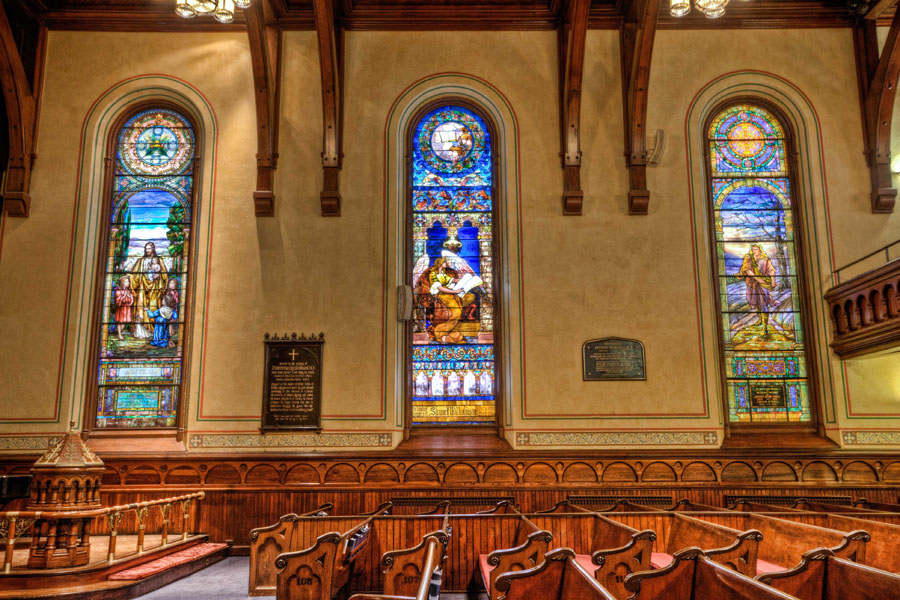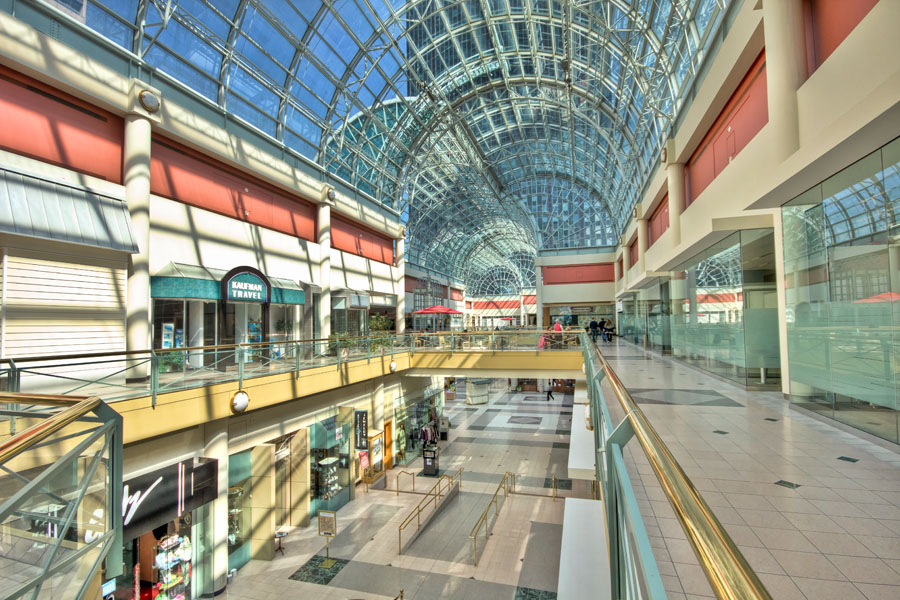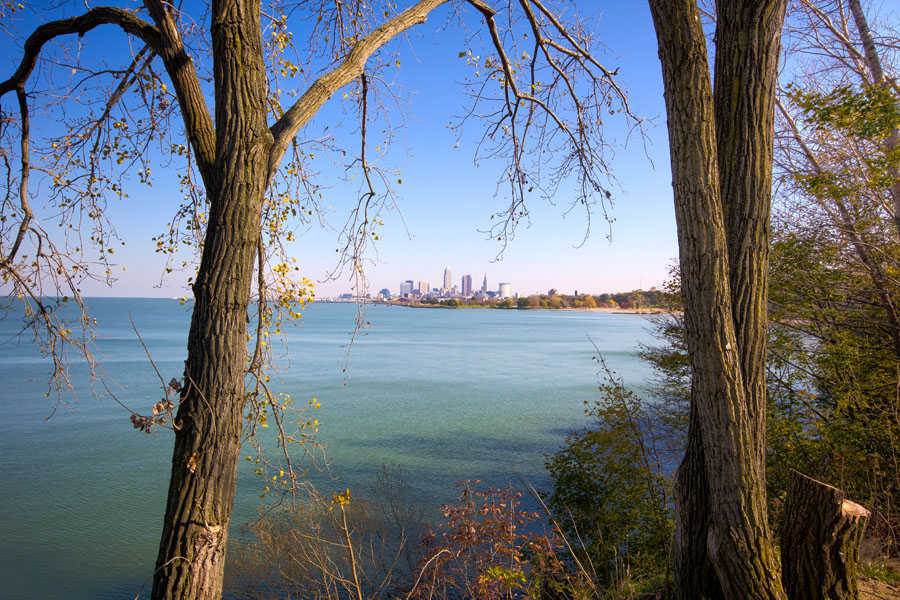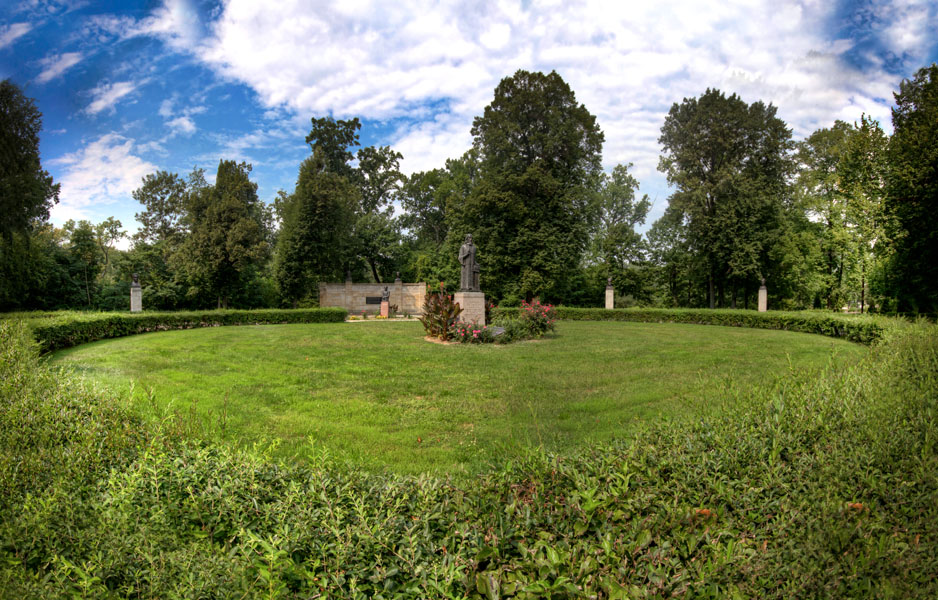Stained Glass in the Old Stone Church
The Old Stone Church on Public Square is one of my favorite buildings to photograph. The staff at the church was kind enough to take me on a tour of the building and I was able to learn a lot about one of Cleveland’s coolest landmarks. (see http://brentdurken.com/inside-the-tower) Here is some more information about the Church from their website:
“The Old Stone Church, long a downtown Cleveland landmark, has a congregation dating back to 1820. Officially known as The First Presbyterian Society, it was founded at a time when Cleveland was just a village of a few hundred people. As Cleveland has grown in size and importance, The Old Stone Church has kept pace, becoming a symbol of spiritual leadership, community involvement and stability in the heart of the city.
The sixteen Christian men and women who met on September 19, 1820, to sign the charter formally establishing the First Presbyterian Church were members of a Bible class which had met for a year under the direction of Elisha Taylor. Among them was Rebecca Carter who with her husband, Lorenzo, had been the first permanent white settlers in Cleveland. A variety of sites, including a one-room schoolhouse and the log courthouse, served as meeting places for the fledgling church. Finally, in 1827, The First Presbyterian Society was incorporated, with the primary purpose of building a permanent home for the congregation.
The first church building was dedicated on February 26, 1834, on the northwest corner of Public Square, the historical center of downtown Cleveland. The building, of Tuscan-style architecture, was built of gray sandstone. It was the first stone church in Cleveland and was known as “The Stone Church.” Later, as the sandstone darkened, the name became The Old Stone Church.
Dedicating the Church was the Rev. John Keep, the last of six home missionaries recruited by the Connecticut Missionary Service for “frontier service” to Congregational and Presbyterian groups. The year following the dedication, the first Pastor, Samuel Aiken, was called. He served more than 25 years, establishing a precedent for exceptionally long pastoral tenure throughout the history of The Old Stone Church.
In 1853, reflecting the rapid growth of Cleveland, the congregation was outgrowing the sanctuary which had been erected just 20 years earlier. A new church, built on the site of the original structure, was dedicated on August 12, 1855. The massive foundation and walls were constructed of sandstone, lined with brick, at a cost of $60,000.
Nineteen months later, on March 7, 1857, a disastrous fire hit The Old Stone Church and spread from the roof to the 250-ft. steeple, which swayed and crashed across Ontario Street. Amasa Stone led the successful struggle to rebuild on the original property, and the renovated church was dedicated on January 17, 1858. Later, galleries and another graceful spire were completed.
During the following twenty-five years many social service organizations were formed by Old Stone members, directed toward moral and social problems. These included the YMCA, the YWCA, Children’s Aid Society, Western Seamen’s Society, Lakeside Hospital, The Goodrich Society, and the first Cleveland medical school.
A Service of Thanksgiving was held at the end of the Civil War, and a new Peace Bell raised in the belfry. As Abraham Lincoln’s funeral cortege stopped at Public Square, people were called to his memorial service at the church by the tolling of the massive bell (now installed in front of the church, facing Public Square).
Old Stone is the only remaining building to have been in existence during the lighting of Public Square with Charles Brush’s arc light in 1879.
The building was struck by another severe fire on January 5, 1884. John Foote, Samuel E. Williamson and Col. John Hay convinced the congregation that the historic site was worth preserving. Work began immediately, with architect Charles Schweinfurth employed to guide the restoration. Mr. Schweinfurth was new to Cleveland and Old Stone’s renovation was the first of many important commercial architectural contributions he was to make to the city.
While Old Stone’s walls required few repairs, the interior needed to be completely reconstructed. The steeple was declared unsafe and removed. The restored church, dedicated on October 19, 1884, is essentially the church you see today. A recent capital campaign resulted in cleaning and repairing the church, re-landscaping, and restoring the steeple. The Sanctuary was also renovated”.
http://www.oldstonechurch.org/
Today’s quote: “On the recollection of so many and great favours and blessings, I now, with a high sense of gratitude, presume to offer up my sincere thanks to the Almighty, the Creator and Preserver”. – William Bartram









